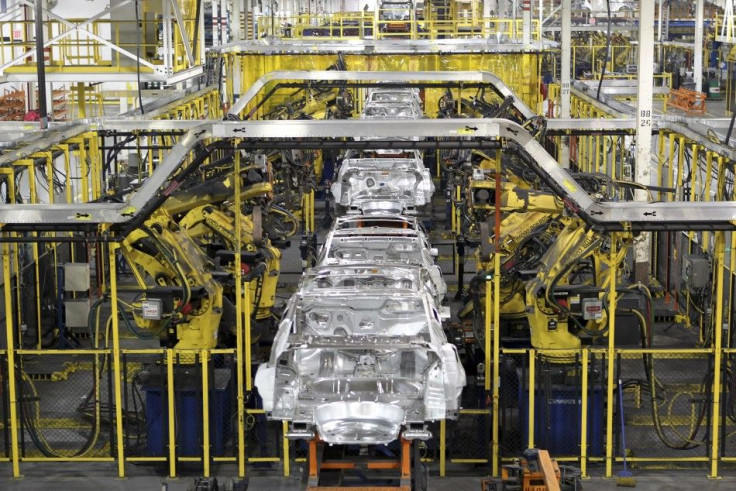U.S GDP Up 1.3% in Second Quarter, Jobless Claims Plunge - Ray of Light for Economy?

Two economic reports released Thursday may give encouragement to the U.S. stock market's bull, or those who calculate the market is headed higher -- initial jobless claims plunged 37,000 to 391,000 last week and U.S. GDP in the second quarter was revised slightly higher, to 1.3 percent from 1.0 percent.
However, the encouraging jobless claims reduction -- the lowest jobless claims total since April -- has a qualifier: several technical factors may have skewed the data lower, the U.S. Labor Department said. One irregular event that may have increased claims in weeks prior: Hurricane/Tropical Storm Irene.
Those irregular event are the primary reason economists emphasize the more-telling 4-week moving average, as it smooths-out anomalies due to holidays, strikes, and weather-related layoffs, etc.
And that more-telling, less-volatile 4-week moving average fell 5,250 to 417,000.
A Bloomberg survey had expected initial jobless claims to total 420,000. The previous week's total was revised 5,000 higher to 428,000 from the originally estimated 423,000.
One unqualified bright spot in last week's report: continuing claims declined another 20,000 to 3.74 million. A year ago, continuing claims totaled 4.46 million in early September 2010.
If jobless continue to fall or remain below the psychologically-significant 400,000 level in the weeks ahead, that would signal to economists and investors that commercial activity is increasing and that most companies are, at minimum, likely to commit to hiring. Some companies may resume hiring in a big way.
Bernanke: Unemployment Level 'A National Crisis'
Further, the nation's serious unemployment situation is not lost on the head of the world's most powerful central bank. In a speech in Cleveland late Wednesday, U.S. Federal Reserve Chairman Ben Bernanke said the weak labor market is a national crisis.
This unemployment situation we have, the jobs situation, is really a national crisis, Bernanke said in response to questions after the Cleveland speech. We've had close to 10 percent unemployment now for a number of years and, of the people who are unemployed, about 45 percent have been unemployed for six months or more. This is unheard of.
Meanwhile, the second report, on U.S. Gross Domestic Product (GDP), should provide modest, unqualified hope for the stock market's bulls: GDP in the second quarter increased a revised 1.3 percent -- up 0.3 percentage points from the originally-estimated 1.0 percent growth rate, the U.S. Commerce Department announced Thursday.
An increase in construction spending and a slight improvement in consumer spending accounted for much of the second quarter upward revision.
A Bloomberg survey had expected revised second quarter GDP to total 1.2 percent.
As most investors/readers can deduce, the 1.3 percent second quarter growth rate is not large enough to lower the U.S. unemployment rate but the key point here is the direction of the revision: it was revised higher, and if that trend continues, like downward jobless claims, that would be a positive sign regarding the U.S. economic recovery and bullish for the U.S. stock market.
Equally significant, the core-Personal Consumption Expenditure Index, or core-PCE, which excludes food and energy, rose at a revised 2.3 percent annual rate, higher than the originally released 2.2 percent rate. The 2.3 percent rate is the largest increase since the seccnd quarter of 2008: if that rate holds, or rises, it would probably spark some concern at the Federal Reserve about rising inflation -- unless the Fed plans to tolerate slightly higher inflation in the current era, than historically.
Public Policy/Economic Analysis: Score Thursday's two economic reports a half-win and a win for the bulls. Hurricane/Tropical Storm Irene probably boosted claims artifically higher earlier, hence the past week's large drop in claims has to be viewed with that factor in mind.
Meanwhile, the revised second quarter GDP report is a ray of light for the U.S. economy: the increase wasn't much, but the key is the trend: given the fragility of the economic recovery, institutional investors will likely view any GDP report that does not show a deterioration as a win -- a bullish sign for the economy and the stock market. Or as many traders say on Wall Street, It beats the alternative.
© Copyright IBTimes 2025. All rights reserved.





















